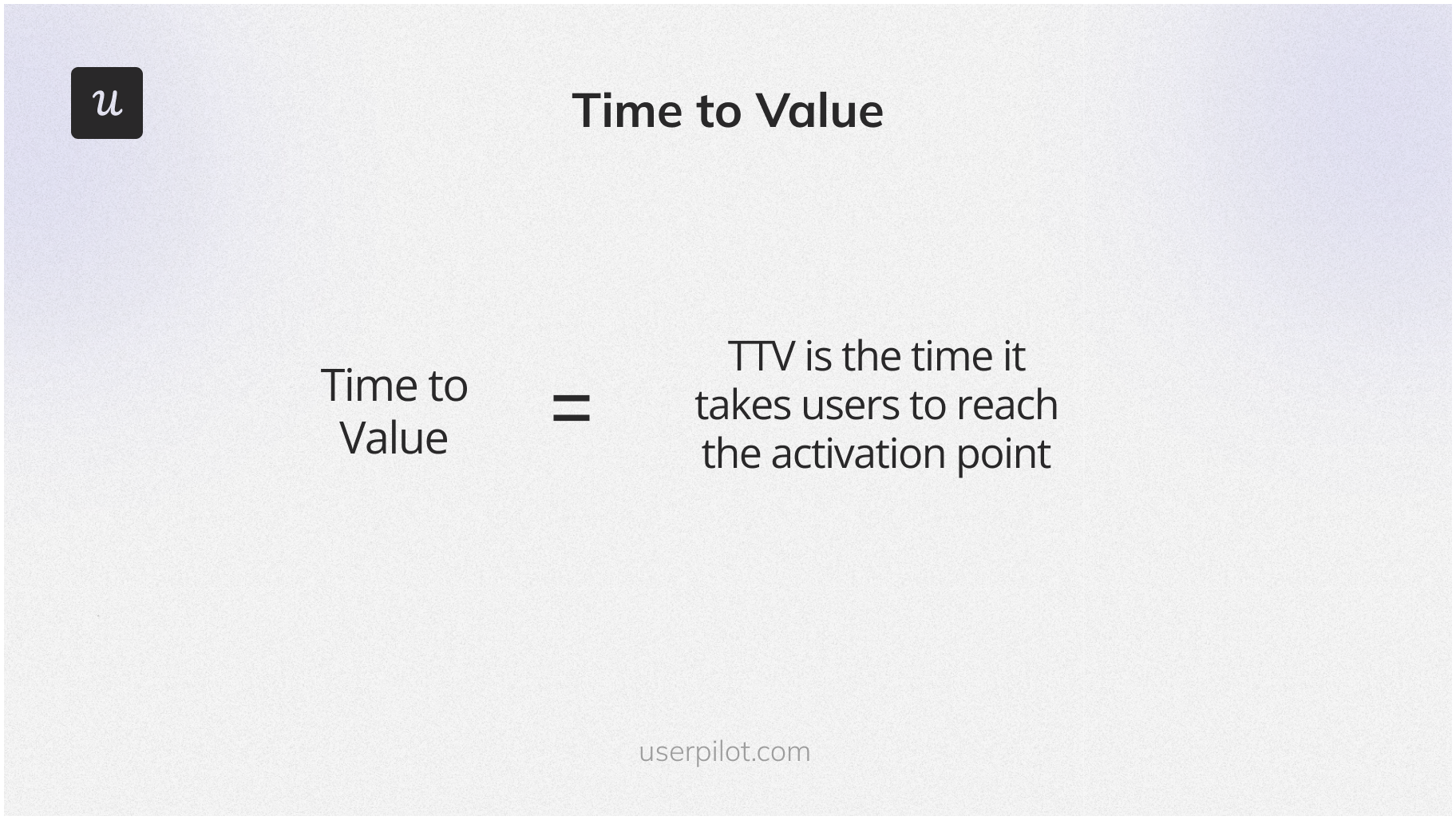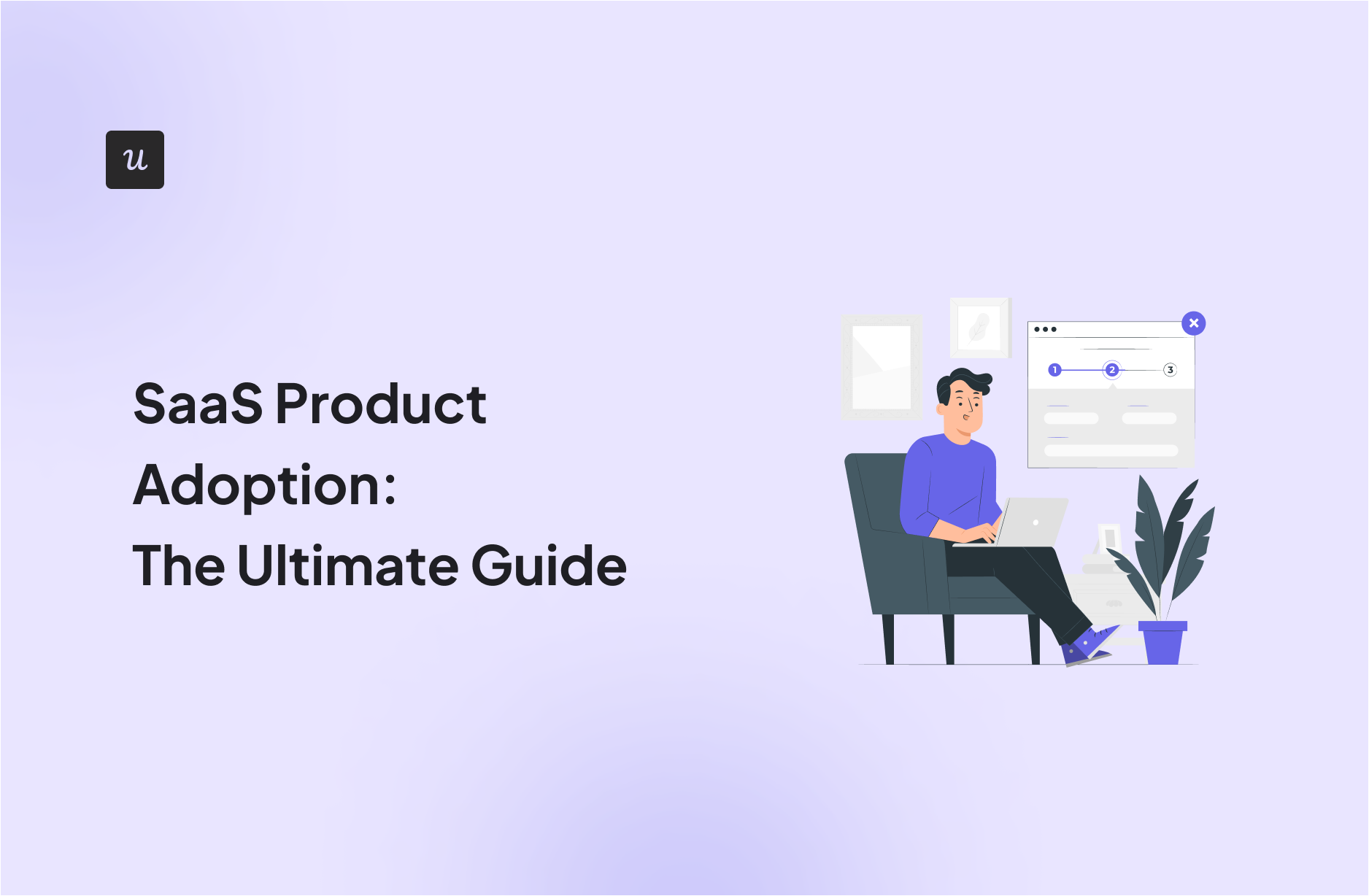
How important is understanding your SaaS product adoption? Well, really important.
Look at it this way: if a clothing shop gets tons of customers in the door but none actually buy anything, the shop probably isn’t long for this world.
The same is true for SaaS companies. Getting users to check out the product is great, but if they don’t fully adopt it then they’re essentially just window shoppers. User adoption is about turning those window shoppers into loyal, paying, repeat customers.
Get The Insights!
The fastest way to learn about Product Growth, Management & Trends.
What is SaaS product adoption?
SaaS adoption describes the user journey from initial interest to the active and purposeful use of a product.
A product has been “adopted” when the user has moved from trialing the product to investing in it as a solution.
Fostering product and user adoption is essential to counteract the forces that can lead to churn or stop existing users from adopting your product in the first place.
Why is SaaS adoption important?
Your company’s churn rate is where you see the work of customer acquisition and product adoption undone. Thus, reducing the churn rate is especially important for SaaS companies since customers don’t just buy the product once.
Of course, subscription-based products need that initial conversion of interest to activation as much as any other product, but maintaining activation is absolutely essential.
Otherwise, your customer lifetime value (CLV) and your monthly recurring revenue (MMR) will plummet.
Simply getting more customers doesn’t help reverse trends in these key metrics. Instead, you’ll get a much larger bang for your buck by giving attention to your existing customers and their customer experience along with your product.
A good example of this value is that upselling to existing customers can be 5 to 10 times cheaper than acquiring a new customer.
However, leveraging the value of your current customers requires a strong understanding of what drives initial and ongoing product adoption.
What are the 5 adopter categories?
The first big-picture way to understand the product adoption process is with the product adoption curve.
The curve shows the rates at which different customer categories tend to adopt a product at different stages of its customer lifecycle too.
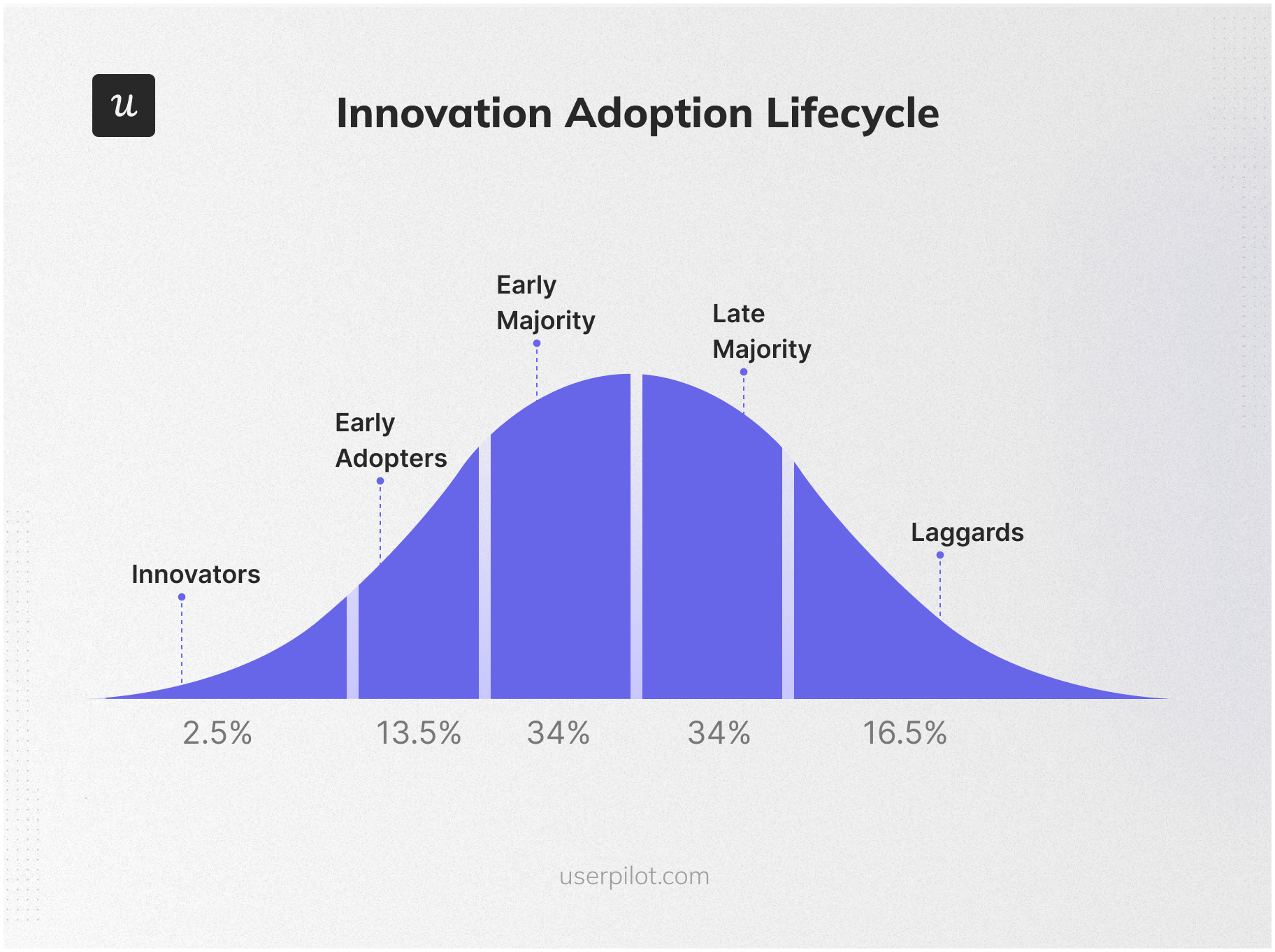
As we can see from the graph, there are five different stages, and each stage comes with customer segments of different sizes and characteristics.
Let’s break down the stages and segments:
1. The innovators
This small segment (2.5% of the market) are users excited about new technology, and who don’t mind if there are some bugs and hiccups with the product.
Despite being a small market segment, innovators are important as an early feedback resource. They tend to be tech-savvy and can spot potential issues or missing features.
However, as vanguard users, they are more interested in trying something new than committing long-term to a product.
2. The early adopters
Early adopters are a larger segment than the innovators and often have a greater need for your product as well as resources to spend on solutions.
These users are more interested in innovation than novelty and will expect the product to work effectively toward their goals and needs.
Capturing early adopters means working out the kinks in your product and establishing a good reputation. These users won’t adopt products on a lark and will expect strong customer support for any issues that arise.
3. The early majority
This group is only interested in a product once it has established itself and earned a solid reputation.
The early majority’s risk aversion creates a chasm between the second and third segments.
Overcoming this chasm takes a strong relationship with the innovators and early adopters to build a sense of security for the early majority.
Investing in this foundation is worth it, though, since the early majority are looking for a solution to stick with over time – in other words, they are likely to become a large segment of loyal product adopters.
4. The late majority
The late majority is another large segment and shares a lot of overlap with the previous group. However, what differentiates them is that the late majority is even more risk-averse and intolerant of technical issues.
In short, the late majority of users are jumping on the bandwagon but only when they feel completely secure in doing so.
5. The laggards
The final segment is small and relatively resistant to new products. They prefer the technological solutions that they’re already comfortable with and will switch to new solutions only when it becomes a necessity.
What are the product adoption journey stages?
With any product, the user’s experience doesn’t end at purchase. For SaaS, in particular, we can break the product adoption journey into seven stages.
Understanding these stages can help your company nudge new customers forward in their journey and strengthen their level of adoption.
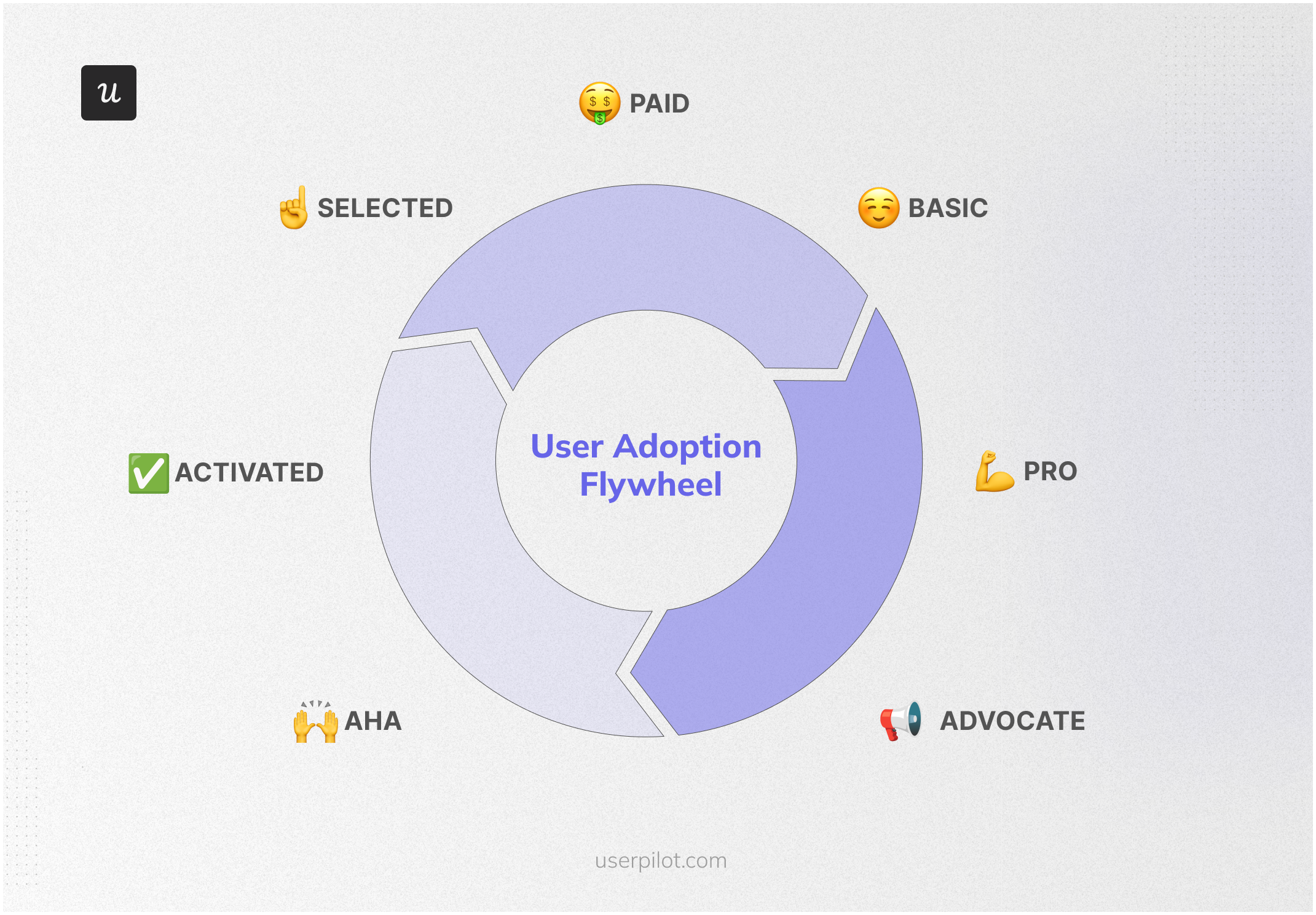
To see how this works, let’s take a look at each step of the journey:
- The “Aha!” moment: This is the moment when a user realizes the value of your product for resolving a pain point.
- Activated: While the “Aha! moment” is a mental state of enthusiasm for your product, users only become “activated” when they begin actually getting value from the product.
- Selected: “Selected” is when a user decides your product works best for them and stops using other products.
- Paid: This stage is when users decide your product is worth paying for to keep using. A “Paid” user doesn’t follow automatically from “Selected”, though. Be sure to use good conversion tactics to keep the user journey moving!
- Basic: A “Basic” user likes your product and uses some of its features but isn’t utilizing it to its full potential. This means they’re getting less value from your product than they could be with greater feature adoption.
- Pro: “Pro” users know the ins and outs of your product. They’re actively maximizing the value of your product and have fully bought into it. These power users bring tremendous value to your company and are worth every effort to cultivate.
- Advocate: An “Advocate” is a user who gets so much value from your product that they go out of their way to recommend it to others.
What is a product adoption strategy and how to create one?
A product adoption strategy is a plan or approach that a company implements to encourage and facilitate the acceptance, adoption, and usage of a new product or service by its target customers.
The strategy aims to overcome barriers and encourage customers to try, adopt, and integrate the product into their regular usage or purchasing habits.
A well-executed product adoption strategy can lead to increased customer engagement, satisfaction, and loyalty.
Creating a product adoption strategy can be complex. We’ll take a look at the three primary steps for creating an effective strategy here.
1. Understand your user personas
Identify the specific market segment or customer group that the product is intended for.
Understand their needs, preferences, behaviors, and pain points to tailor the strategy effectively.
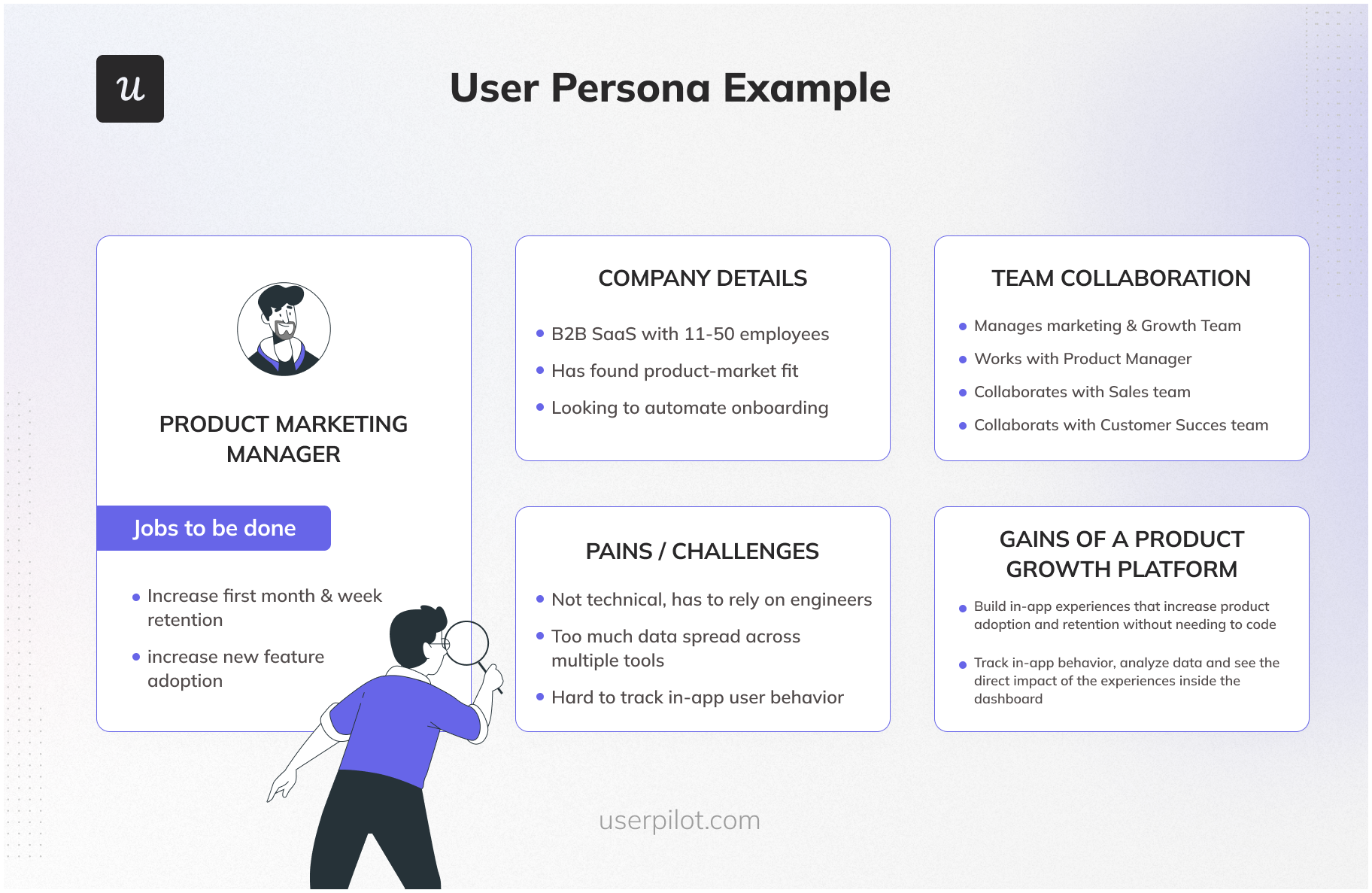
2. Define your key activation points throughout the customer journey and set measurable goals
Activation points are specific milestones or actions that indicate a customer’s progress toward adopting and fully utilizing the product. These points can vary depending on the nature of your product and business.
Examples of activation points include signing up for a trial, completing the initial onboarding phase, making the first purchase, or using a specific feature.
Set activation goals and determine what customer success looks like for each activation point.
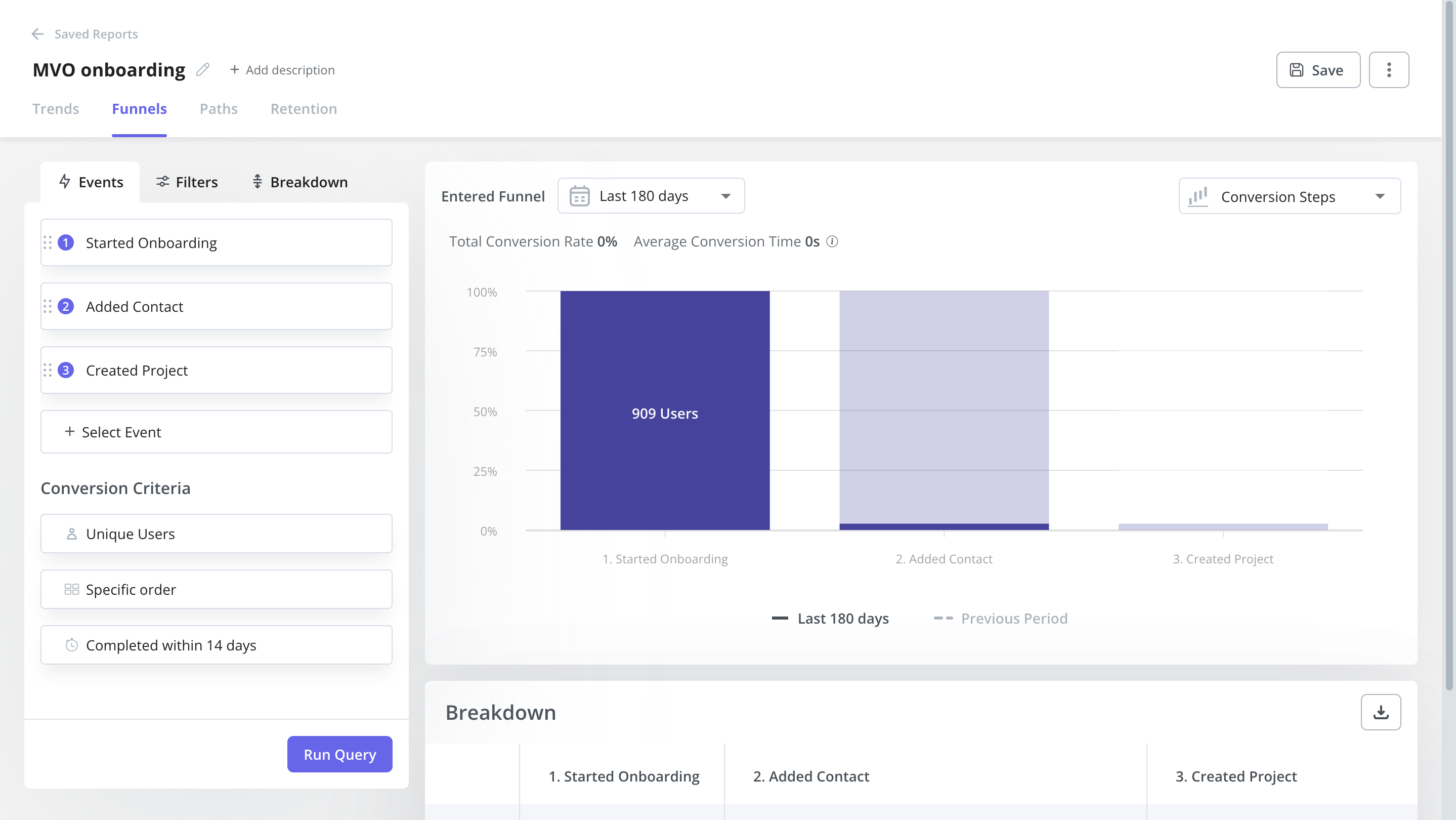
Also, set measurable goals that indicate the desired level of adoption or usage at each stage. These goals should align with your overall product adoption objectives.
3. Develop strategies and tactics
Based on your understanding of the customer journey, activation points, barriers, and motivations, develop strategies and tactics to facilitate customer progression through the activation funnel.
Effective strategies and tactics to improve the product adoption process
Now that you’re familiar with all the context supporting and inhibiting product adoption, it’s time to look at concrete user adoption strategies for improving it.
Let’s jump into our most proven strategies for improving product adoption for SaaS companies.
Create a contextual user onboarding process to increase the customer lifetime value
Making the most of your product’s initial onboarding phase is key to increasing user adoption. This lets you hold your user’s hand and guide them through your product.
Of course, it goes without saying that the better your existing customers understand your product, the more likely they are to stick around long-term.
An effective way to encourage users to achieve this is with contextual user onboarding.
Contextual onboarding relies on providing targeted support in real time to help users adopt more features with greater success.
In the context of SaaS business, this often takes the form of tooltips that give advice on how to improve processes that new users are currently working on.
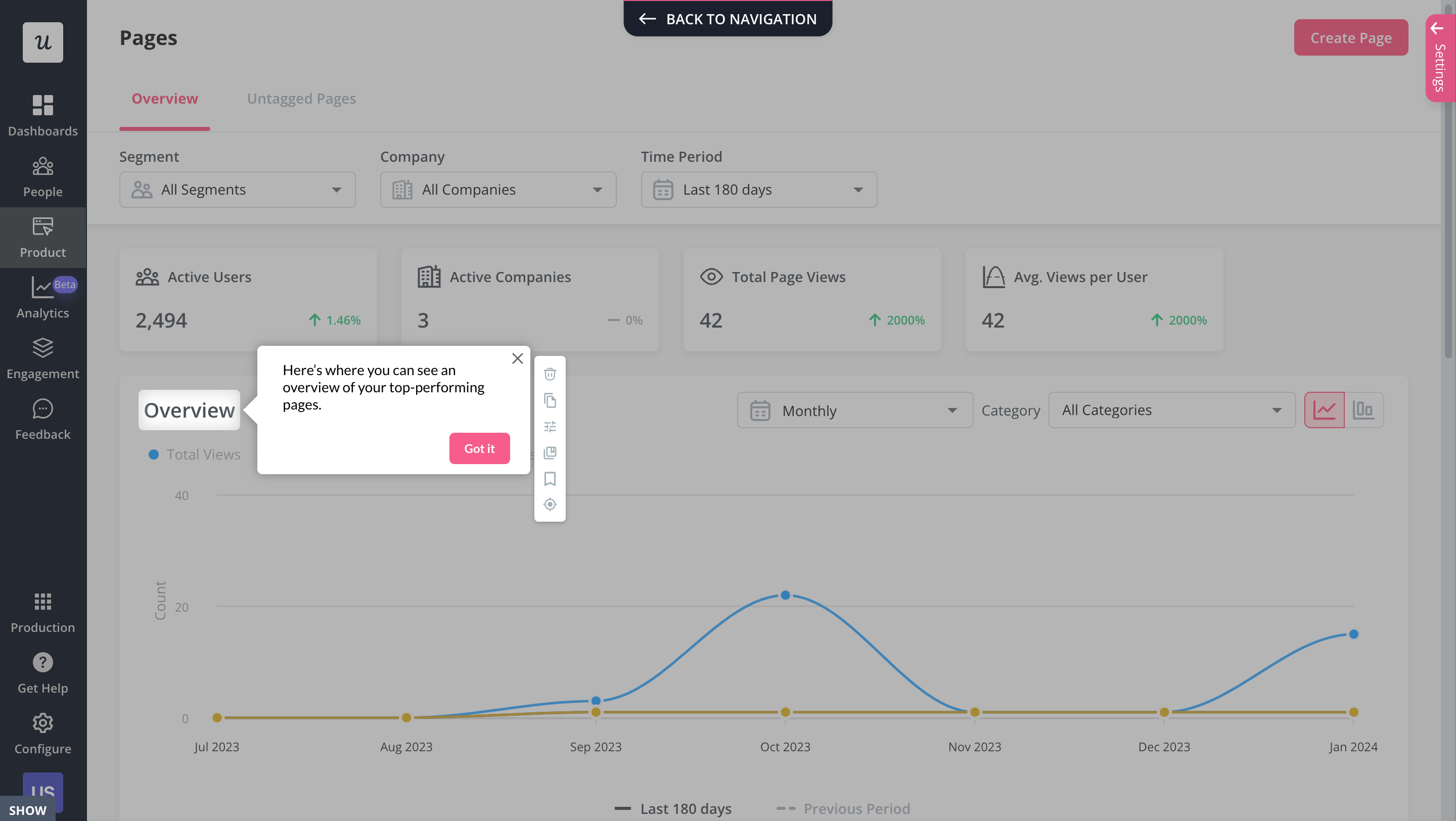
Personalize the customer journey for new users
Next, personalized user onboarding is an important tactic on its own, but also as an extension of contextual onboarding.
Essentially this takes the form of personalizing onboarding flows for different customer segments to enhance and improve user adoption further.
Consider segmenting your users into different personas. Each group can be shown an onboarding flow tailored to them.
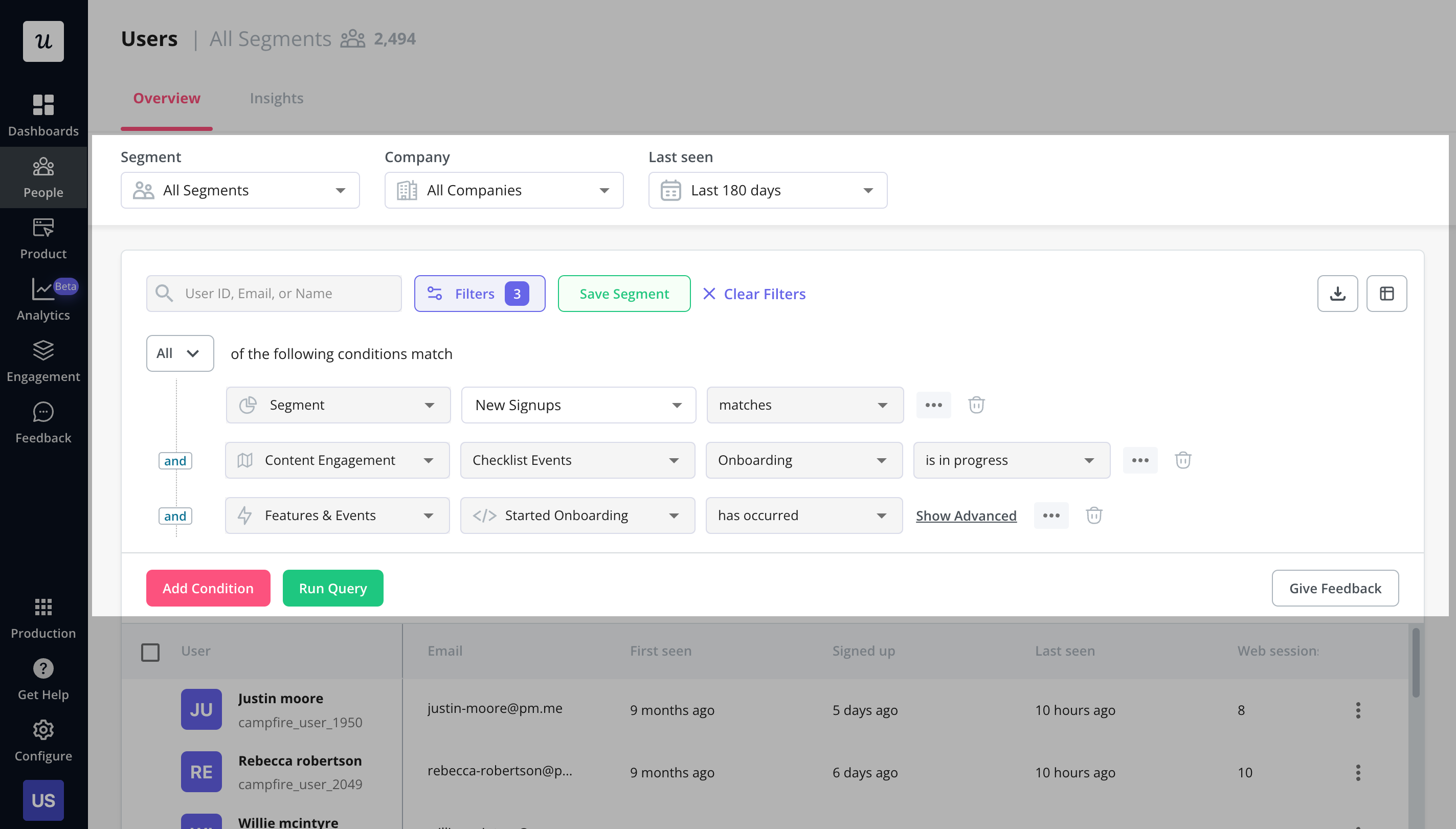
You can think of best practices in user onboarding as boosters to spring users to new stages along the product adoption journey.
Use them to help your customers expand the breadth and depth of product feature adoption.
Drive feature adoption strategy with in-app messaging for existing customers
There’s no guarantee your users will open an email or see a social media update. But the product they use on a daily basis? They’ll definitely see messages there.
In-app messaging benefits from great visibility and the capacity for strategic, timed deployment.
Some of the most common forms of in-app messaging include notifications, changelogs, tooltips, interactive walkthroughs, modals, and sign-up screen adverts.
When used as part of a strong in-app marketing campaign, these message pathways support user onboarding, feature adoption, user feedback, and product announcements.
For example, giving new users an in-app interactive walkthrough is a great way to help them fully adopt a feature.
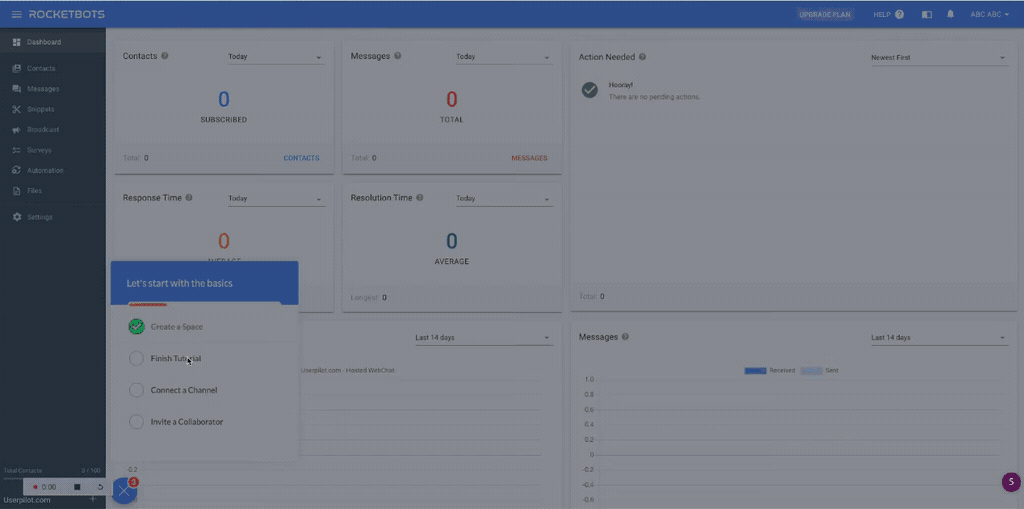
Improve your SaaS user adoption strategy product with customer feedback
You may feel that your app cuts through user pain points like a hot knife. But do the users feel that way?
One of the most effective ways to find out if your product is meeting user needs is simply to ask them!
However, opening the floodgates of user feedback can be overwhelming. There’s going to be positive, negative, and contradictory user feedback coming in from all sides.
How can you sort through it all to discover what’s really going to improve your product?
The best strategy is not to set yourself up for a deluge of feedback immediately. Instead, be targeted and intentional with your feedback requests.
Feature surveys are an excellent way to get focused feedback on specific aspects of your product.
So, rather than asking general questions about your app, include a brief one- or two-question survey that pops up after a particular feature gets used.
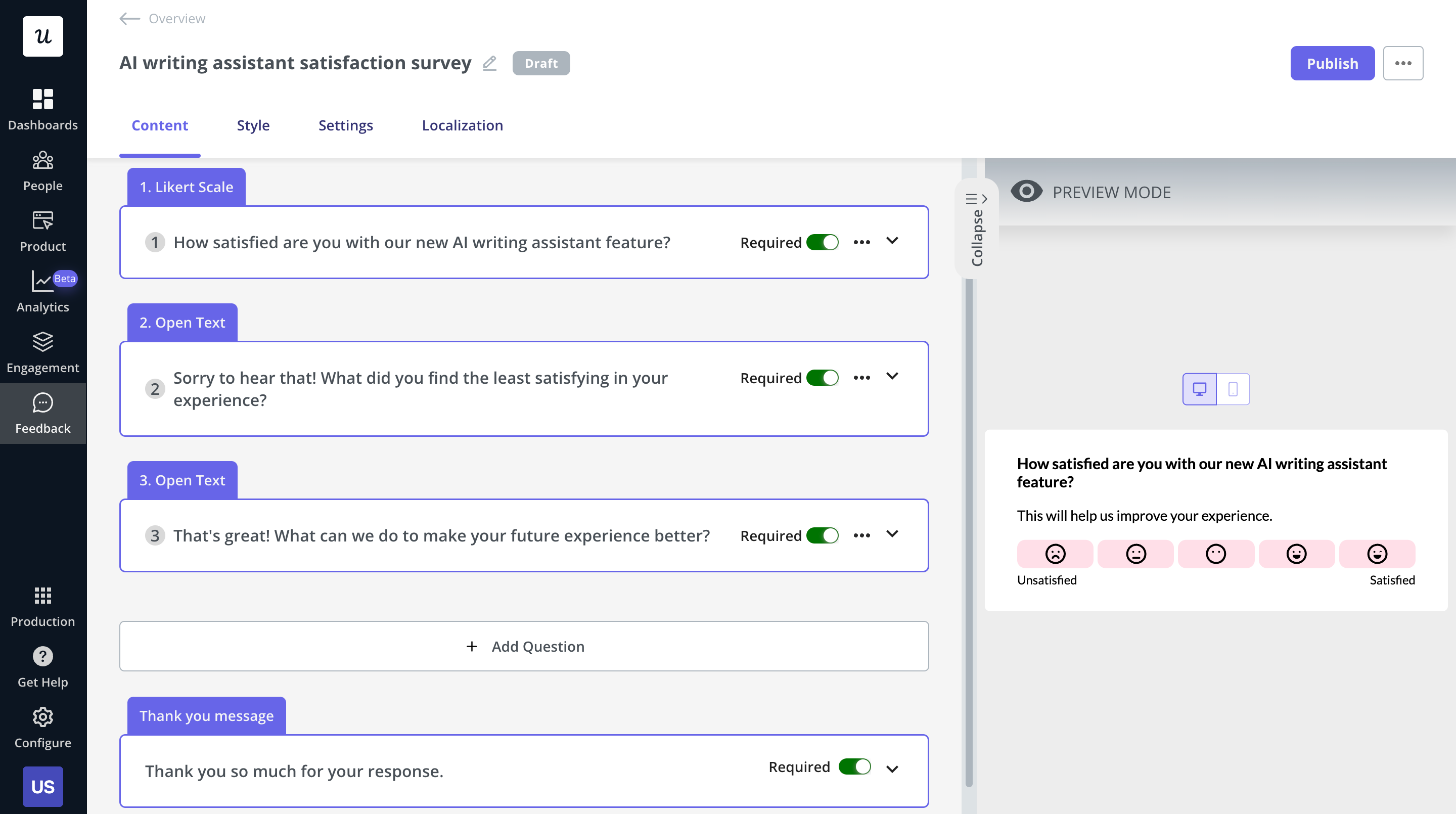
Feature surveys give you focused feedback on how users perceive specific elements of your app. Try creating one with Userpilot!
Improve your in-app support with self-service options
Self-serve onboarding provides tips, guides, and walkthroughs that allow users to learn by doing instead of being bombarded with feature tutorials that may never be relevant to them.
In a nutshell, this style of onboarding allows users to dig into the app right away and learn how to use it as they go.
Tooltips and in-app messaging react to user actions and suggest the onboarding experiences that will hasten that particular user’s “Aha! Moment.”
Basically, we want to avoid a parade of feature tutorials that may generate friction along the product adoption journey.
In practice, one good way to accomplish this is with a help center.
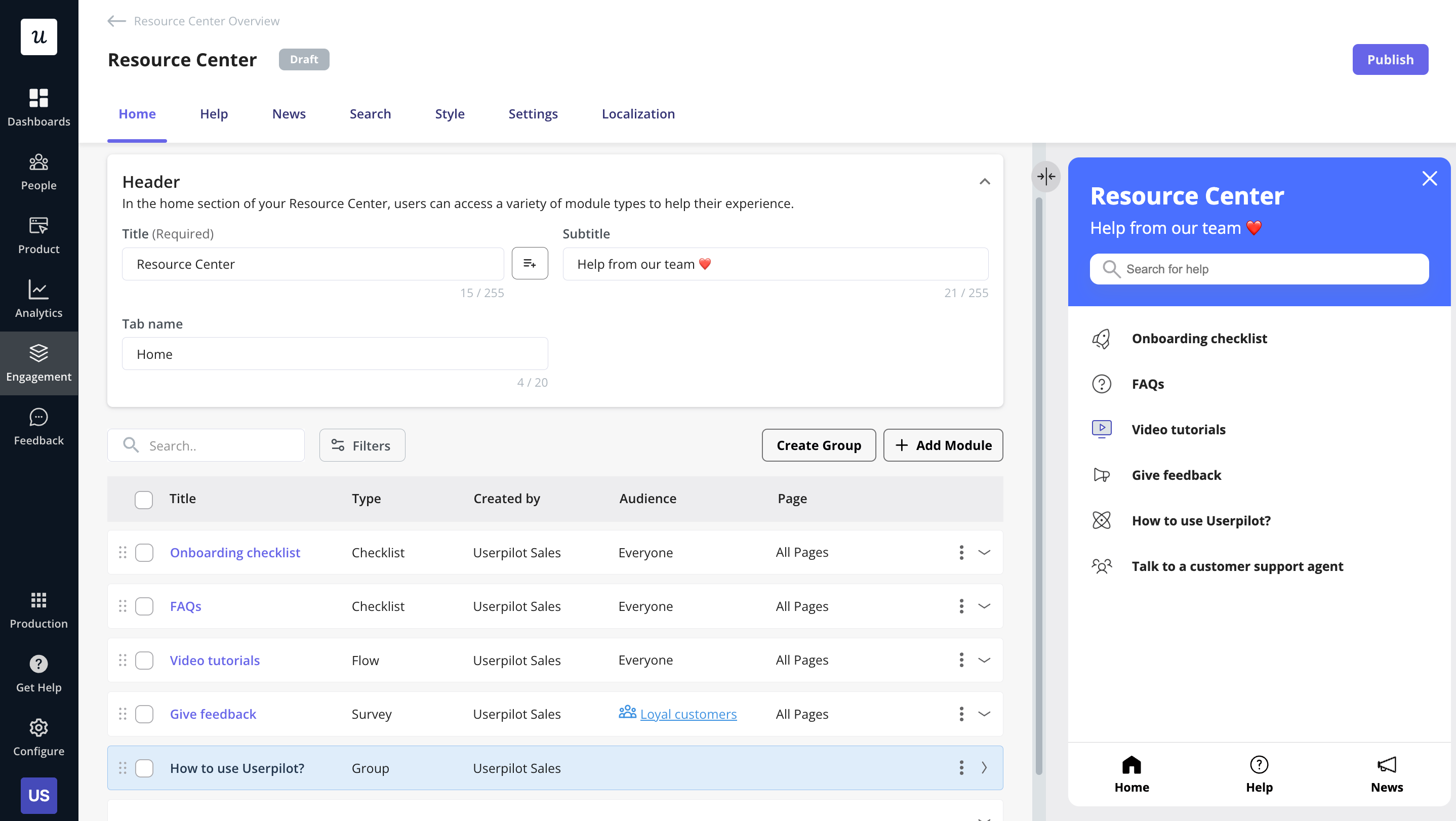
For example, say a user has forgotten how to access a particular feature. They could hop on your website and search for pointers, but that creates a significant interruption in their experience with your actual product.
Reach out to inactive users to bring them back and increase user adoption
All the strategies we have discussed so far are great for users who are actively engaged with your app.
But what about users who have signed up but haven’t started using it yet? Or those who have begun to drift away?
In these cases, it’s important to engage with new users outside the app to bring them (back) in. None of your in-app marketing will work if users never see it!
One of the most effective ways to engage with users outside of your app is contextual email marketing.
Here’s an example of how it works:
Say a user starts a trial of your app. Native tooltips and self-serve onboarding may not get him to the “Aha! Moment” if he doesn’t spend much time in the app.
A well-placed email, however, could trigger additional interest.
For instance, after welcoming a new user, a series of automated emails can be scheduled to support the user in getting started with key product features.

This welcome email kicks off a contextual email marketing sequence.

Here’s an example contextual email marketing sequence.
The real power of a tool like this is not just in the automated sequence of support emails, however.
Contextual email marketing allows you to trigger specific emails based on user actions, events, or personas established in-app.
Channeling your email marketing to contextual user experiences dramatically reduces the chance of your marketing efforts landing in the trash bin.
How do you measure product adoption?
There are many different kinds of product adoption metrics, such as time to value, product activation rate, and customer acquisition cost to name a few.
While it may be tempting to collect all the data you can get your hands on, this isn’t the best way to approach these metrics.
Instead, it’s much more effective to have a focused and strategic approach to your user adoption metrics.
To be useful, your metrics need to be tied to a specific goal. Otherwise, it’s easy to get distracted measuring user behavior that’s irrelevant to actually improving user adoption.
Once you’ve chosen your key metrics, it’s important to visualize them on dashboards to always be on top of changing trends and patterns.
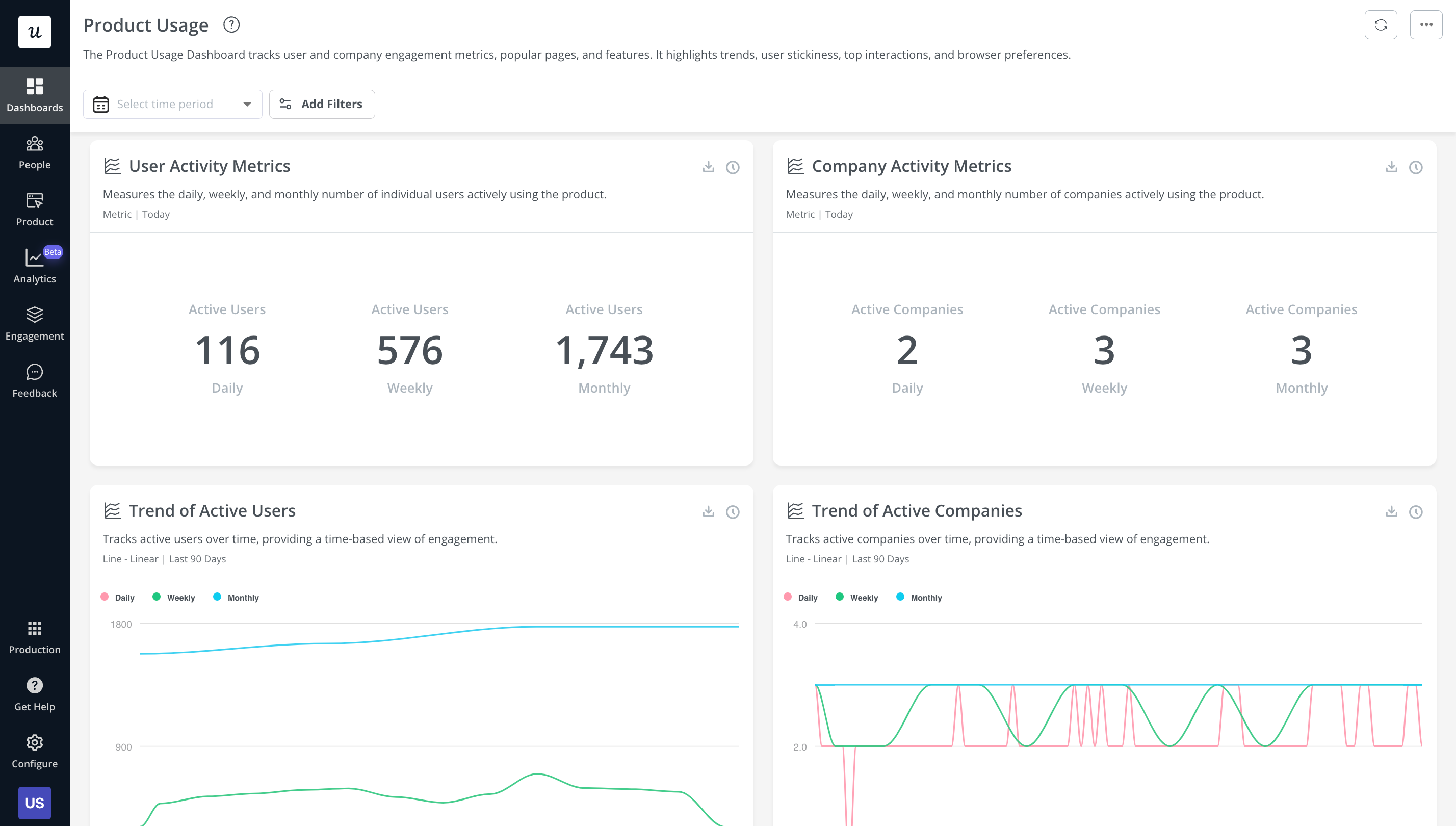
What are the common product adoption metrics?
Let’s take a look now at some of the most important user adoption metrics when measuring product adoption.
- Time to value: TTV is the time it takes for your users to reach the activation point and start getting value from your product.
- Customer lifetime value: CLV is exactly what it says: It’s the value (in terms of currency) that a customer provides over their total lifespan. Increasing customer lifetime value means your customers are sticking around for longer, and are giving you more money as a result.
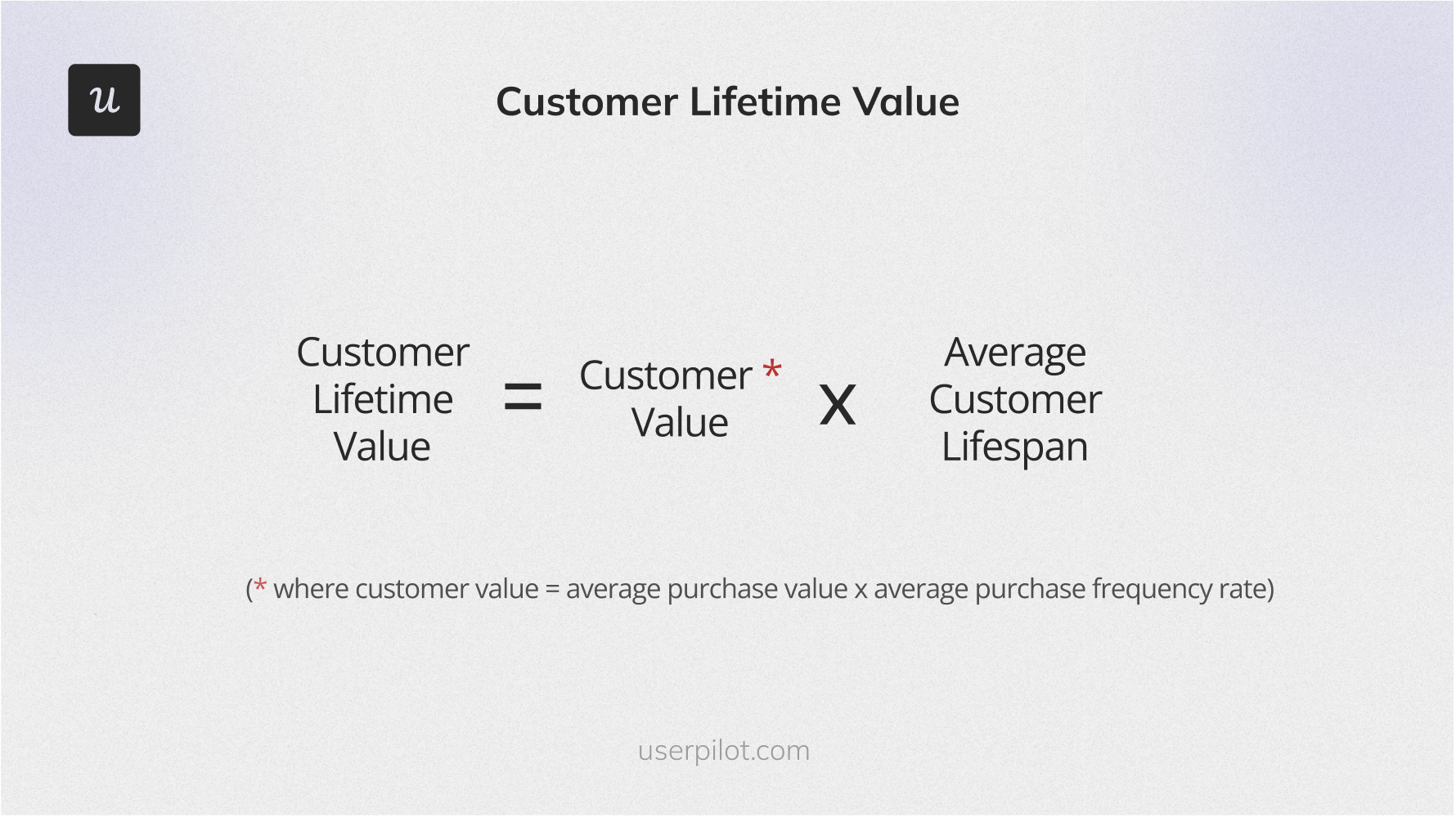
- User activation rate: User activation is tricky to define because it’s different for every product. Once you’ve decided on your proxy for activation, you can begin to measure the user activation rate. This is not a metric to ignore, because a 25% increase in activation can result in a 34% increase in MRR over 12 months.
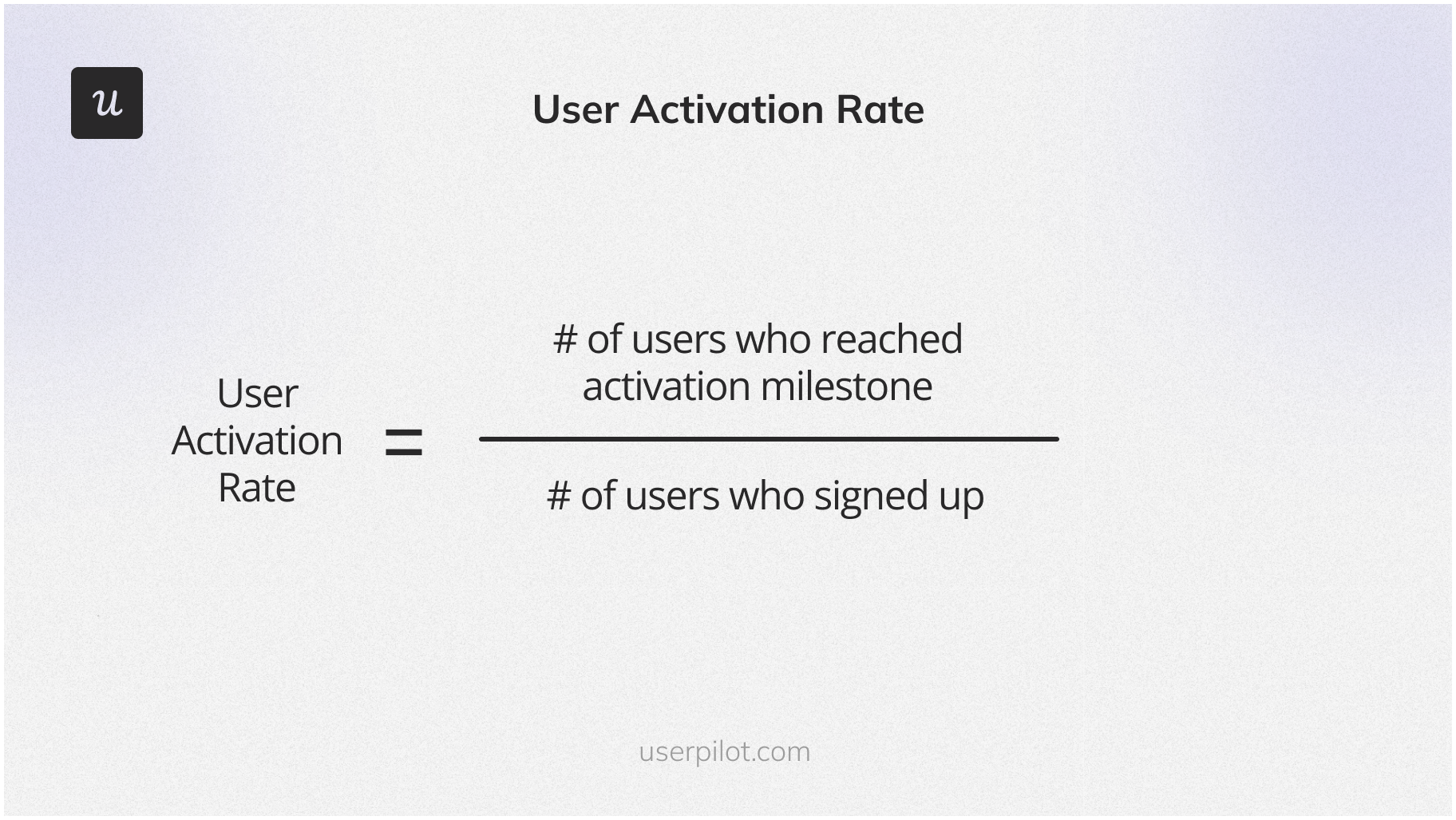
- Feature adoption rate: Since much of your product’s value is tucked into its features, this metric is a key indicator of the amount of value customers are getting or leaving untapped.

- Customer engagement score: Customers obviously won’t get much value from your product if they don’t use it. That’s why measuring user engagement is a key indicator of your customers’ “health”. In other words, customer engagement can show you where your product has opportunities for expansion, and where there may be a risk of churn due to low engagement.
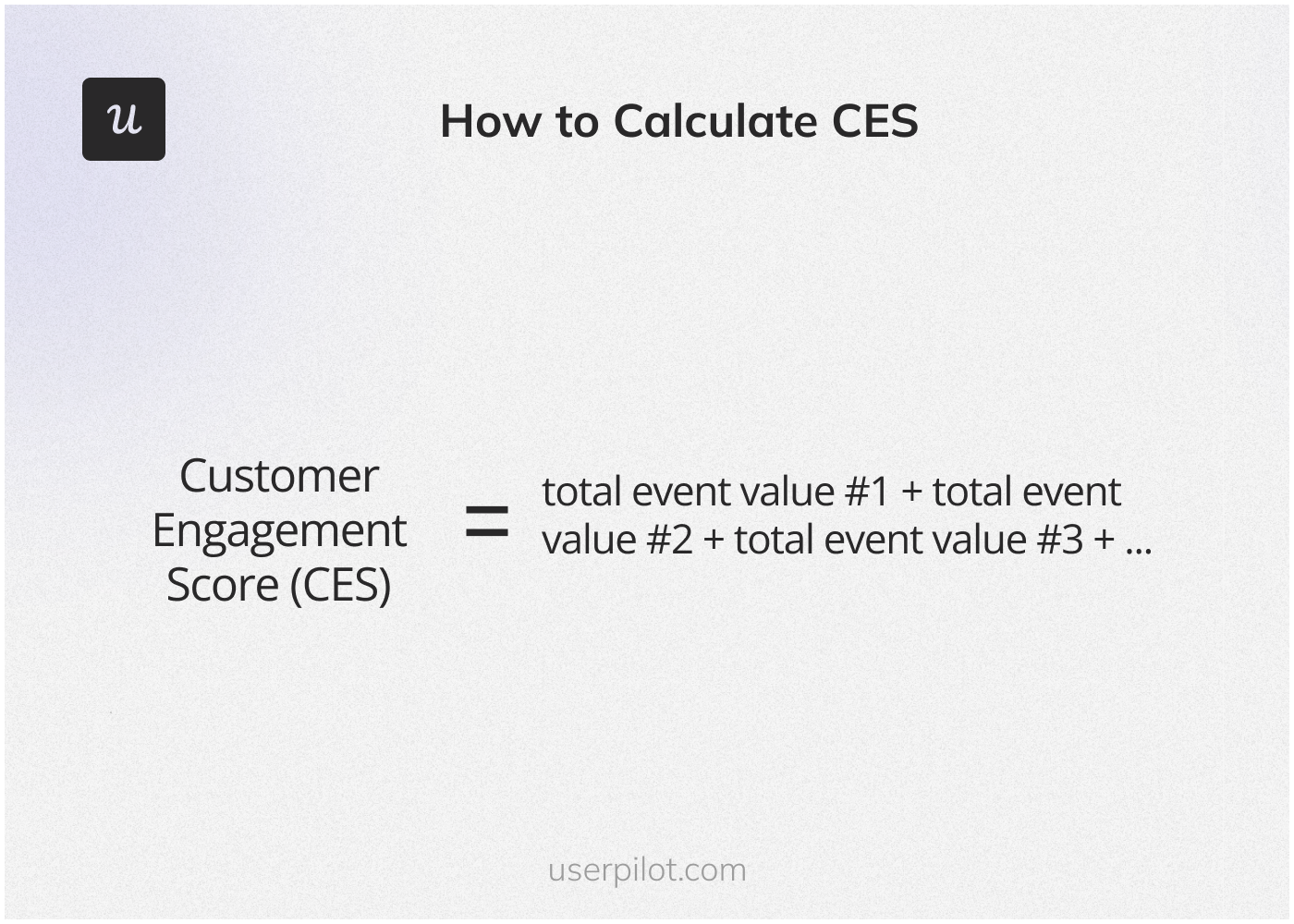
- Product stickiness: Product stickiness is the tendency of users to keep returning to your product because it’s engaging and valuable to them. It drives growth by improving customer retention, providing account expansion opportunities, and increasing customer lifetime value. The Daily active users/ Monthly active users ratio is one of the key product metrics used to measure your product’s stickiness.
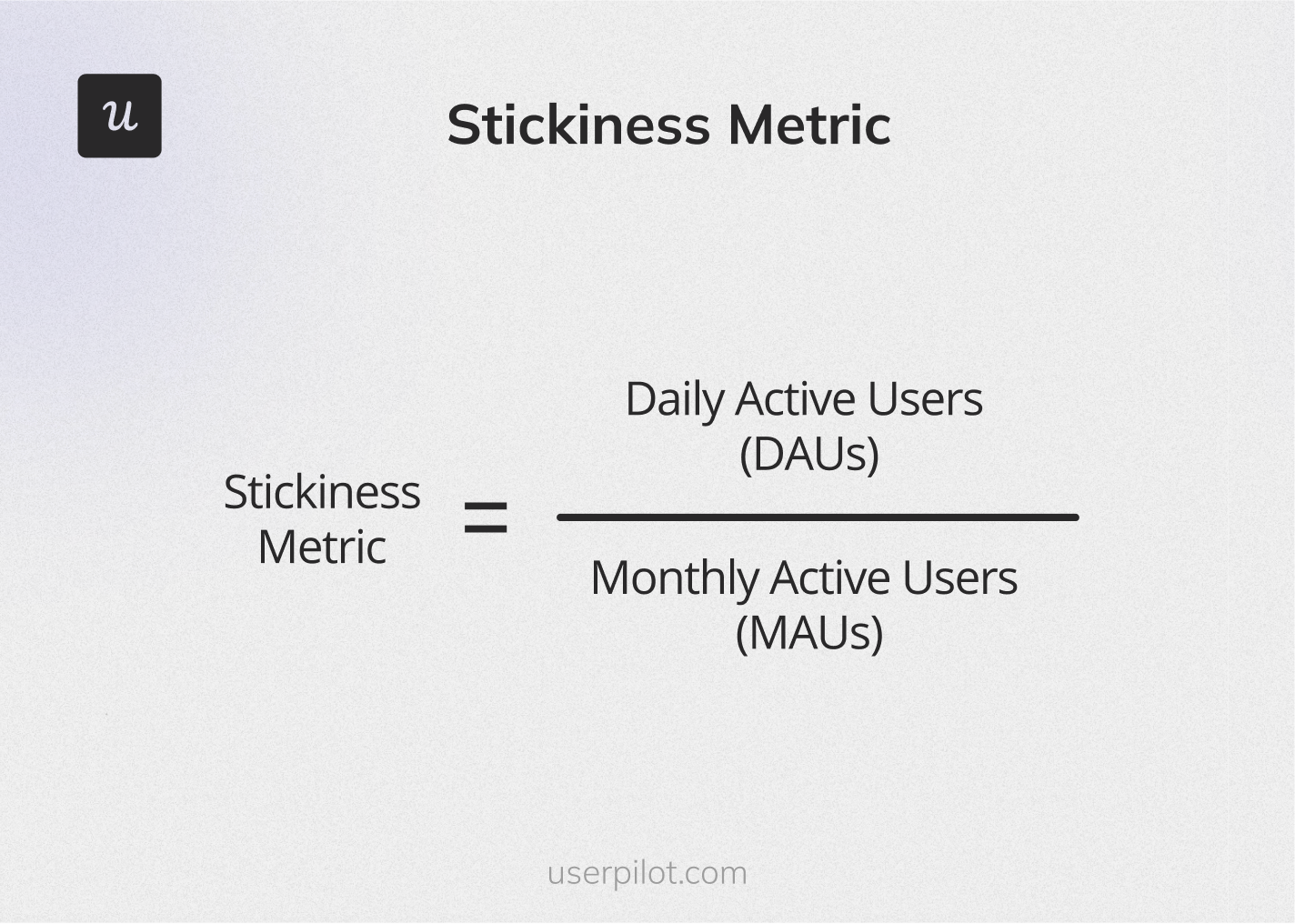
Boost user adoption with Userpilot
Now that you’ve gotten the low down on product adoption, it’s time to dig into a user adoption tool that will help you turn your metrics and strategy into results.
There are loads of tools and software out there for collecting metrics, analyzing customer data, and optimizing your app for frictionless adoption.
Effective use of these tools will help you build the UI patterns and user experiences we’ve covered in this article to boost product adoption.
Userpilot is an outstanding option for its no-coding ease of use to drive user adoption.
Userpilot is a product growth platform that lets you communicate with users in-app, collect adoption metrics, and build your product adoption strategy.
Create an effective user onboarding process
Userpilot offers a host of customizable UI patterns to bring your product adoption strategy to life – from onboarding experiences to feedback surveys, in-app messaging, and more – all without having to write a single line of code.
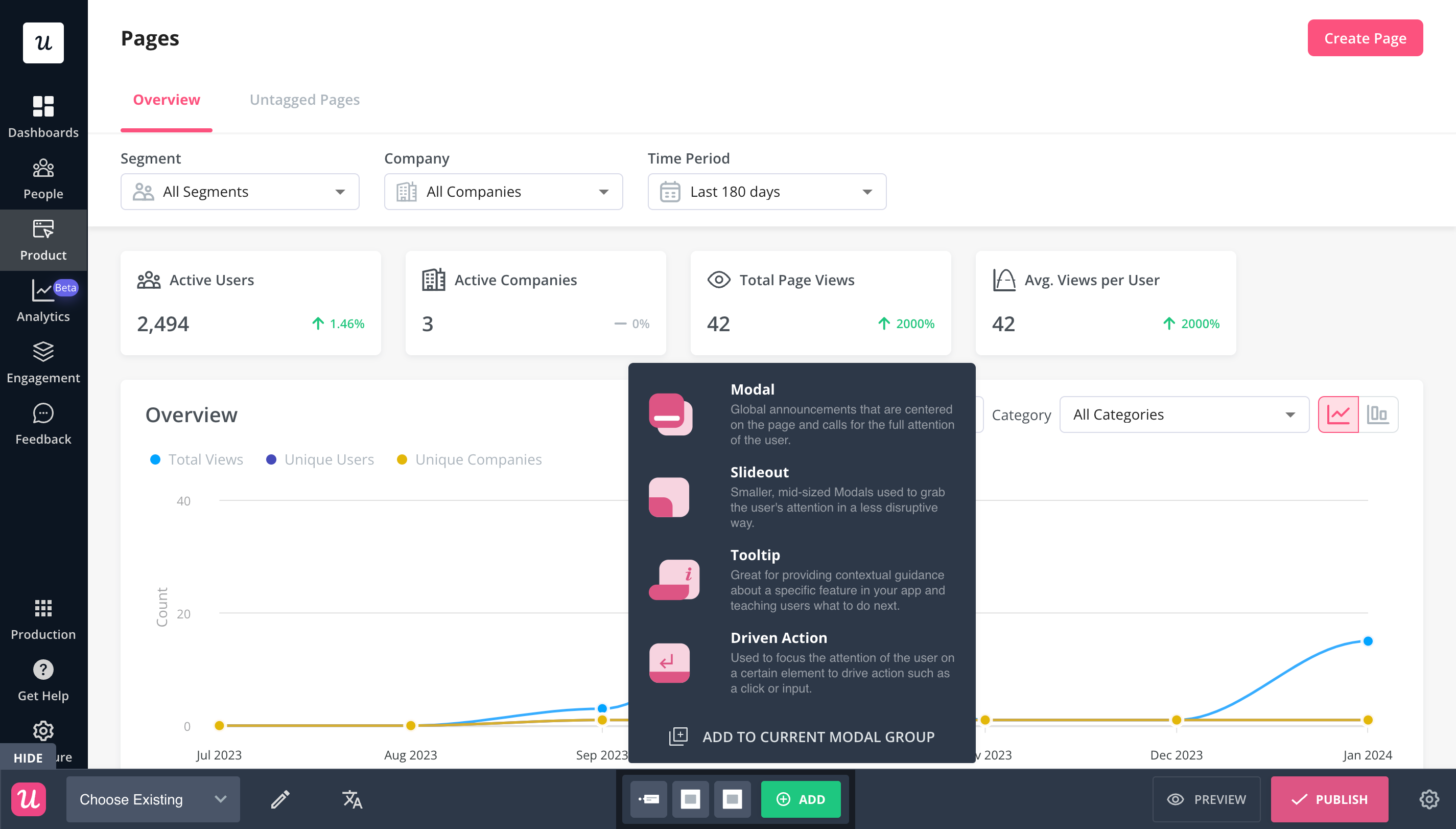
Experiment with different user adoption strategies
You can even run A/B tests to see which elements of your strategy result in higher product adoption rates.
You can align results tracking with specific goals, and tweak user experiences all within Userpilot.
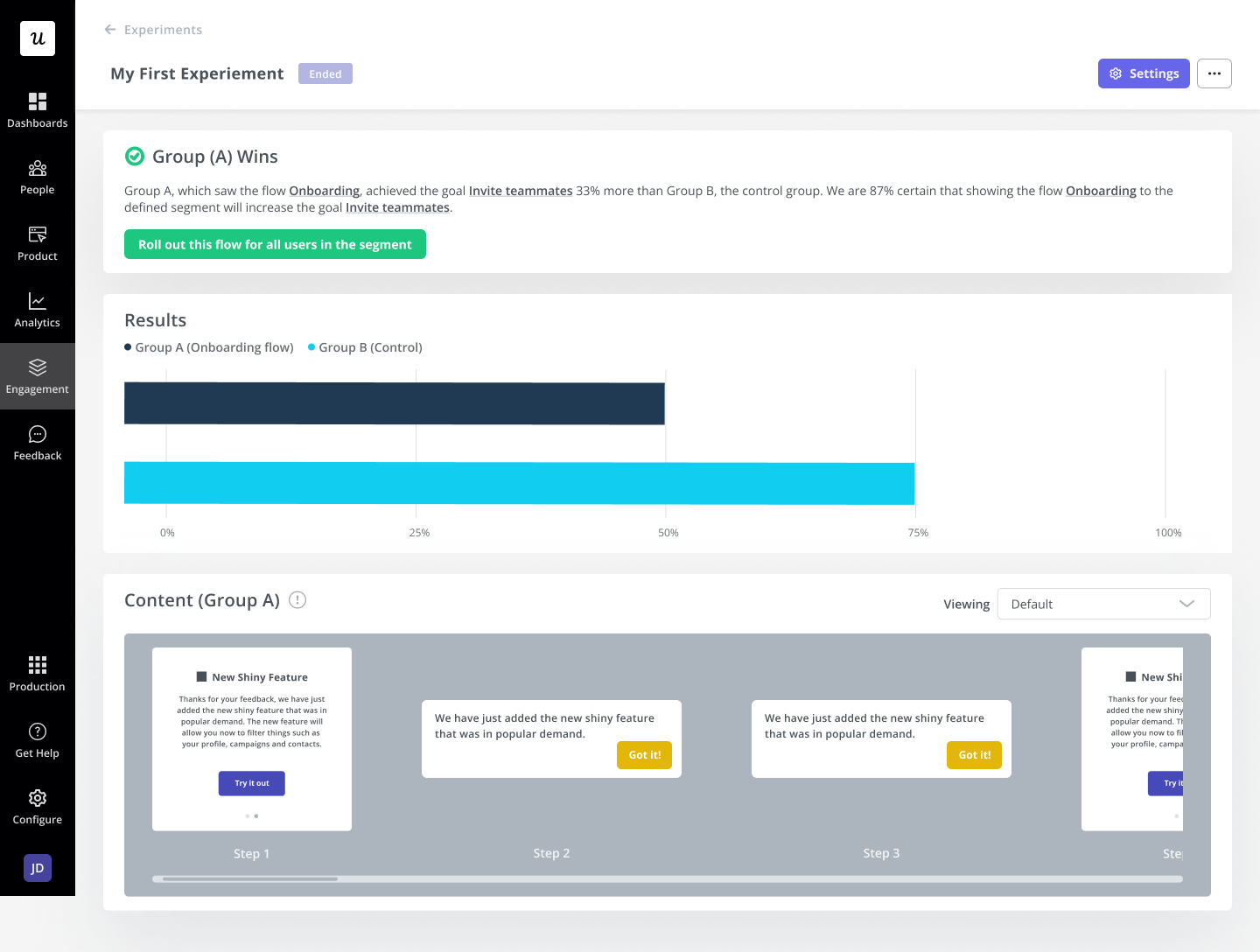
Analyze feature adoption rate with feature tags
Further, you can clarify your understanding of which features are getting adopted most with feature tagging.
This allows you to tag UI elements and track user engagement with particular features.
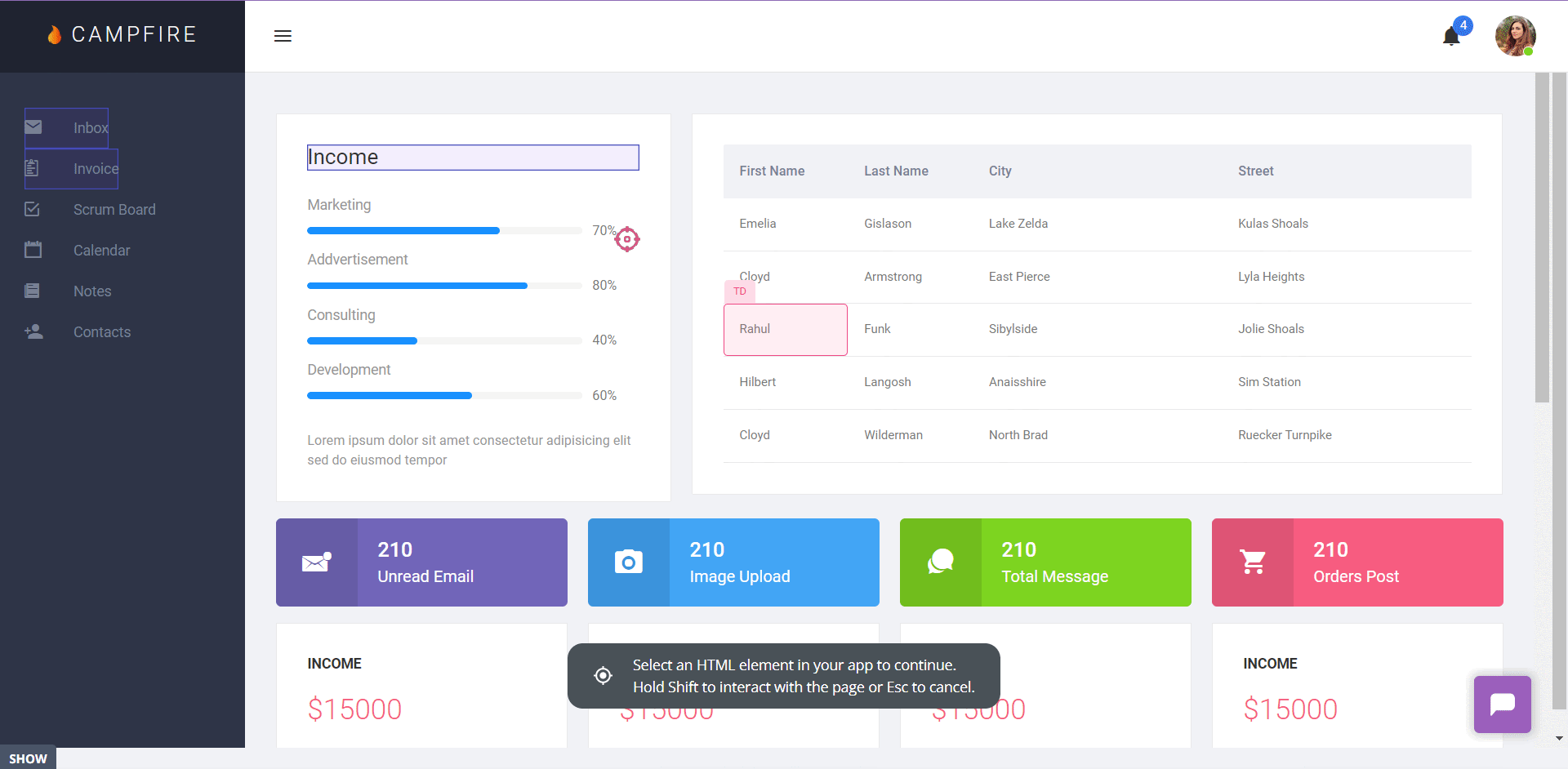
If you’re ready to really up your product adoption game, go grab a Userpilot demo and get started today!
Conclusion
Getting a handle on SaaS adoption can be transformative for your company. Converting window shoppers to loyal, paying customers isn’t magic, and there’s so much you can do to kick adoption into high gear.
Want to start boosting your product’s adoption rates? Get a Userpilot Demo and see how you can take product adoption to the next level.

